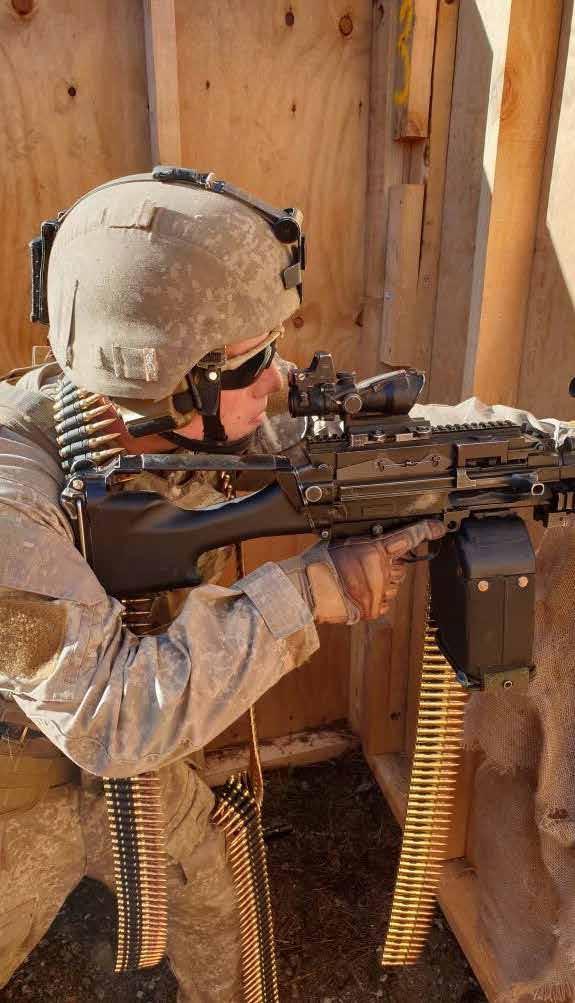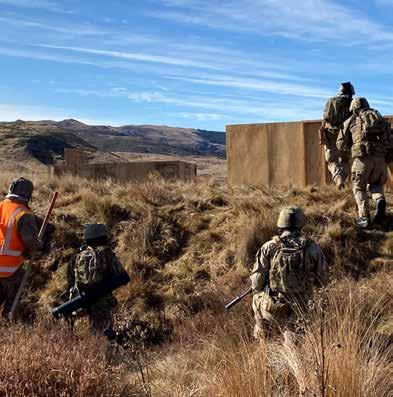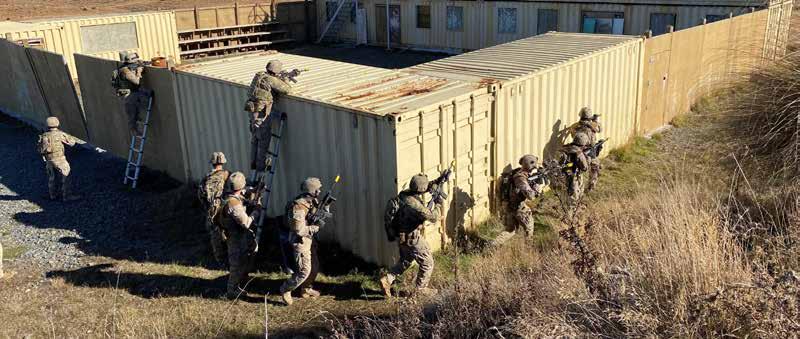
4 minute read
Venom
EX VENOM 1: Urban Live Field Firing
By Lieutenant Alex Iversen
Advertisement


Coming out of the Covid-19 lockdown, the High Readiness Task Unit (HRTU) was resolute, ready to train, and rearing to go. After being given the green light to conduct training at company level, there was no time to waste achieving the first collective training milestone for the HRTU: section live field firing in an urban environment.
Due to the current ban on urban live field firing, HRTU was granted a dispensation to conduct this training. The key to our success during this training was safety and trust. We had to ensure that we developed training progressively for the soldiers: can they hit the black dot; that the experience of live field firing planners was adequate for the roles they would fulfil; and finally, that well considered safety measures that were specific to urban live field firing were developed.
In order to achieve this last point, the Company Sergeant Major HRTU delivered an urban range conducting officer package to the platoon headquarters before the live field firing practices. This was the first condition of a failsafe training concept: if the soldiers can hit the black dot, is the black dot placed in a safe place where no one will be in danger? This helped the platoon headquarters design of urban facades to achieve the aim of the exercise safely. The main lesson: target placement. Are targets placed within the arcs for all firers in the room? Yes, check. Are any other personnel in the live field firing box, positioned on the other side of the target area or in an unsafe location relative to the firer? No, check. The next condition in the fail-safe training concept was progression. What did this look like on the ground? We initially began with dry training in the urban container village, and mine taped areas to ensure the drills were aligned with doctrine, and were safe. Live firing

then began. A field zero occurred, where individual firers engaged targets from 10m with their master hand and offhand each day: this confirmed they could hit the black dot. Firing then progressed to pairs live firing within mine taped areas for visibility, before moving into pairs firing inside the facades. Two days of pairs firing at two different boxes preceded two days of assault team live firing. Once the safety supervisors and range control officers were happy that everyone was at a good level in terms of their standard operating procedures and safety standards, we moved on to two days of section live field firing. Importantly, the section practices were used to test the section commander’s command and control during the final approach, gaining entry and clearance phases of an urban attack.
CSM HRTU provided guidance to the platoon headquarters about their live field firing practises, highlighting where improvements could be made. In addition, safety supervisors conducted thorough rehearsals of all possible actions by participants in each room when live firing.
The HRTU enablers came along for the ride too. Intelligence Operators were integrated into the sections to fight alongside the infantry. The engineers section went through the boxes as the rifle sections did, and the signallers were providing feedback to the commanders.
Objective Hamlet
The section testing box was a small cluster of buildings in the Argo Valley, with hostile Returning Armed Movement elements known to be in the objective. The section commanders were given orders. The cordons were set, snipers in over watch, and fire support group ready to deploy as a quick reaction force. With the sniper pairs and fire support providing isolating fire between buildings and the black side of the objective, the sections had to ensure they provided covering approach fire and intimate fire support.
Aperture labelling, room marking, communications, threat identification, building size, foothold size and report lines are but some of the many considerations burning through a section commander’s mind during an assault. “Closed door left, red zone right, left clear, right clear, room clear, wait, marked, man up”. Communications from the soldiers are essential in an urban environment to enhance the situational awareness of the commander. Snap Orders were delivered on the fly – “Next bound… Primary Point of entry… Alternate Point of Entry, Primary method of entry… Alternate method of entry… Intimate fire support on apertures… H Hour at…”
Each section member had a role whether it be shotgun breacher, thumper carrier, linkman, room marker – all alien roles for a soldier who trained in the close country in 2019. But such is life for a soldier in the HRTU. We need to be trained sufficiently in all terrains that exist in our allocated area of responsibility: the South West Pacific.









